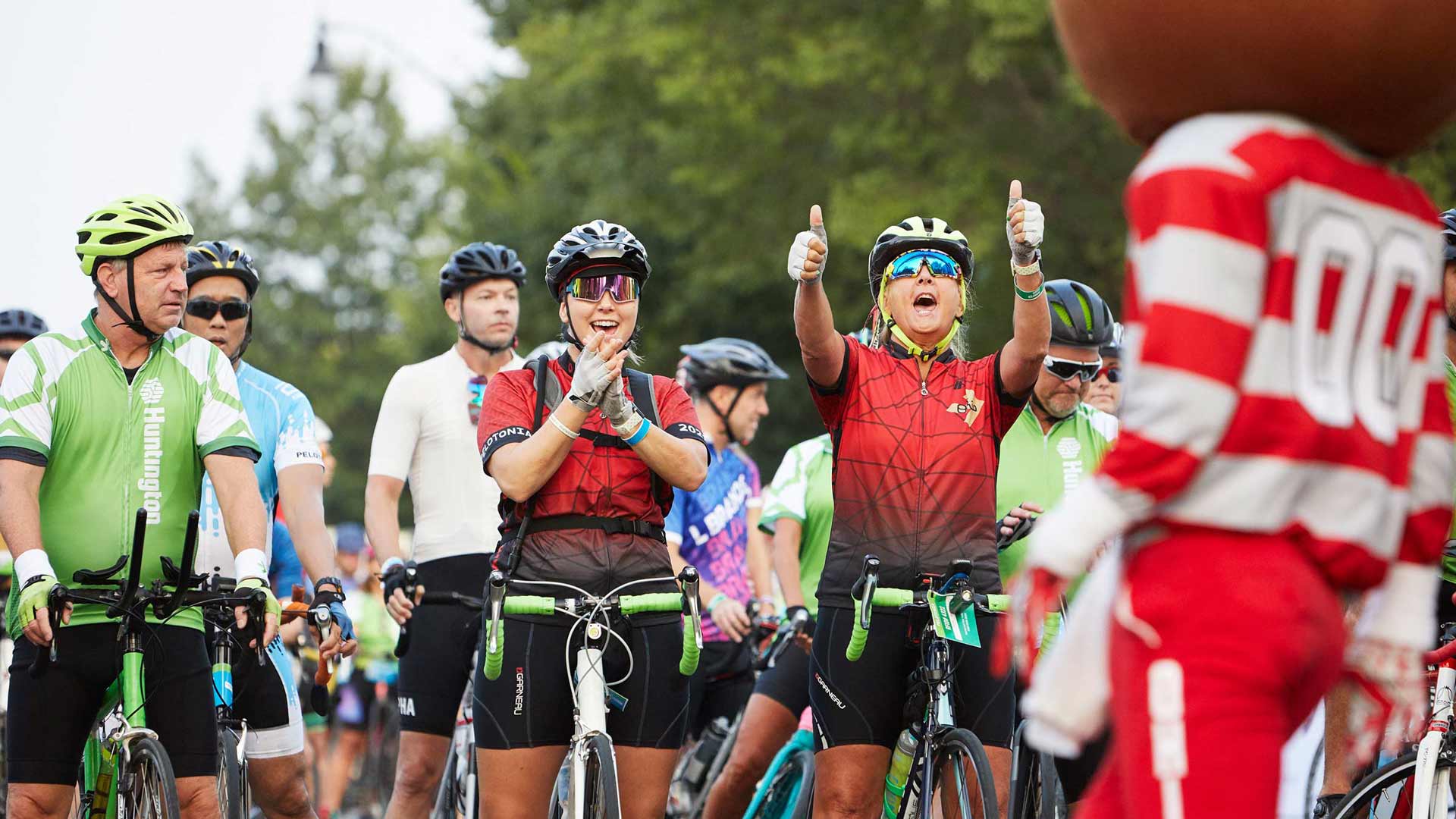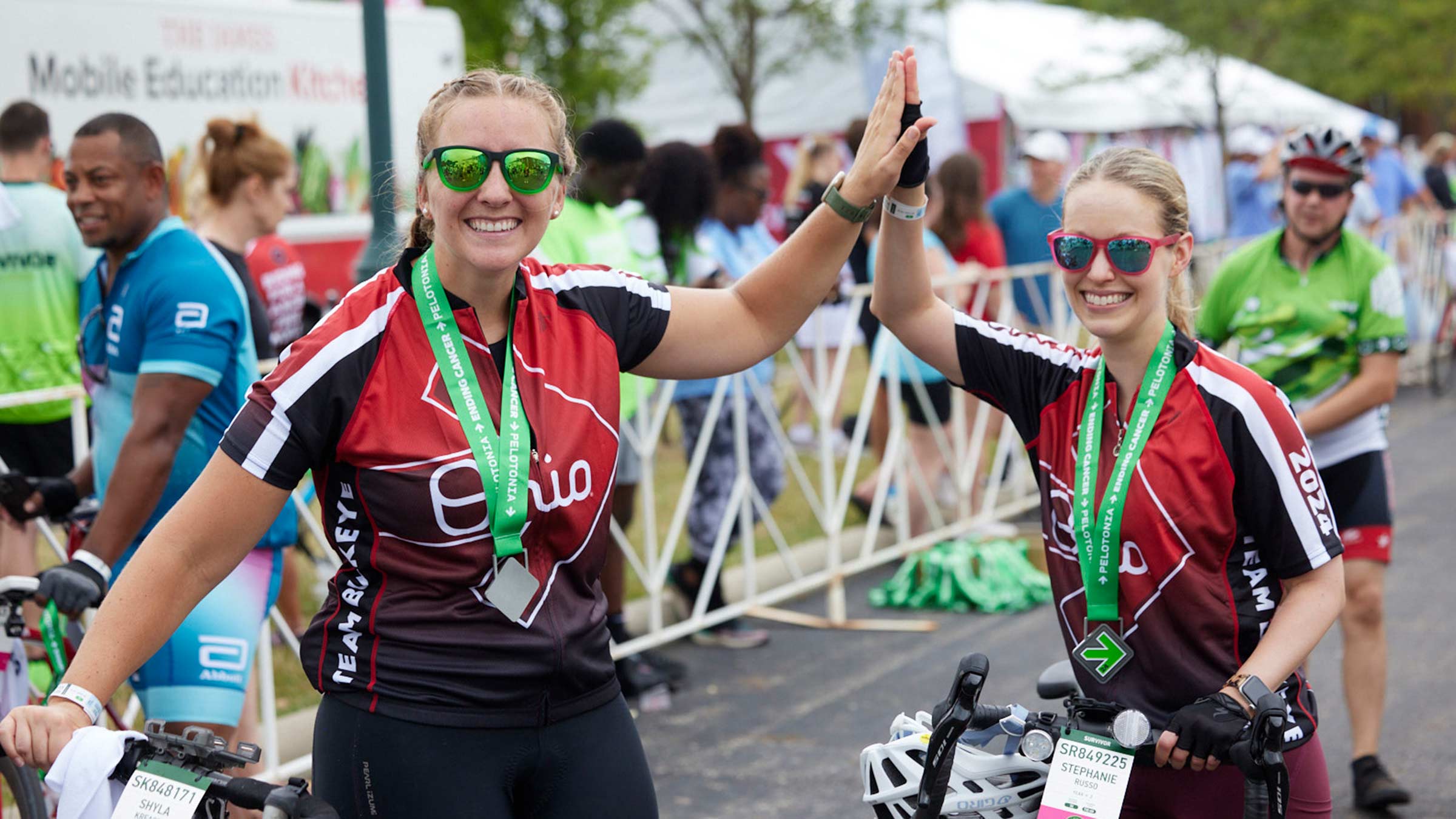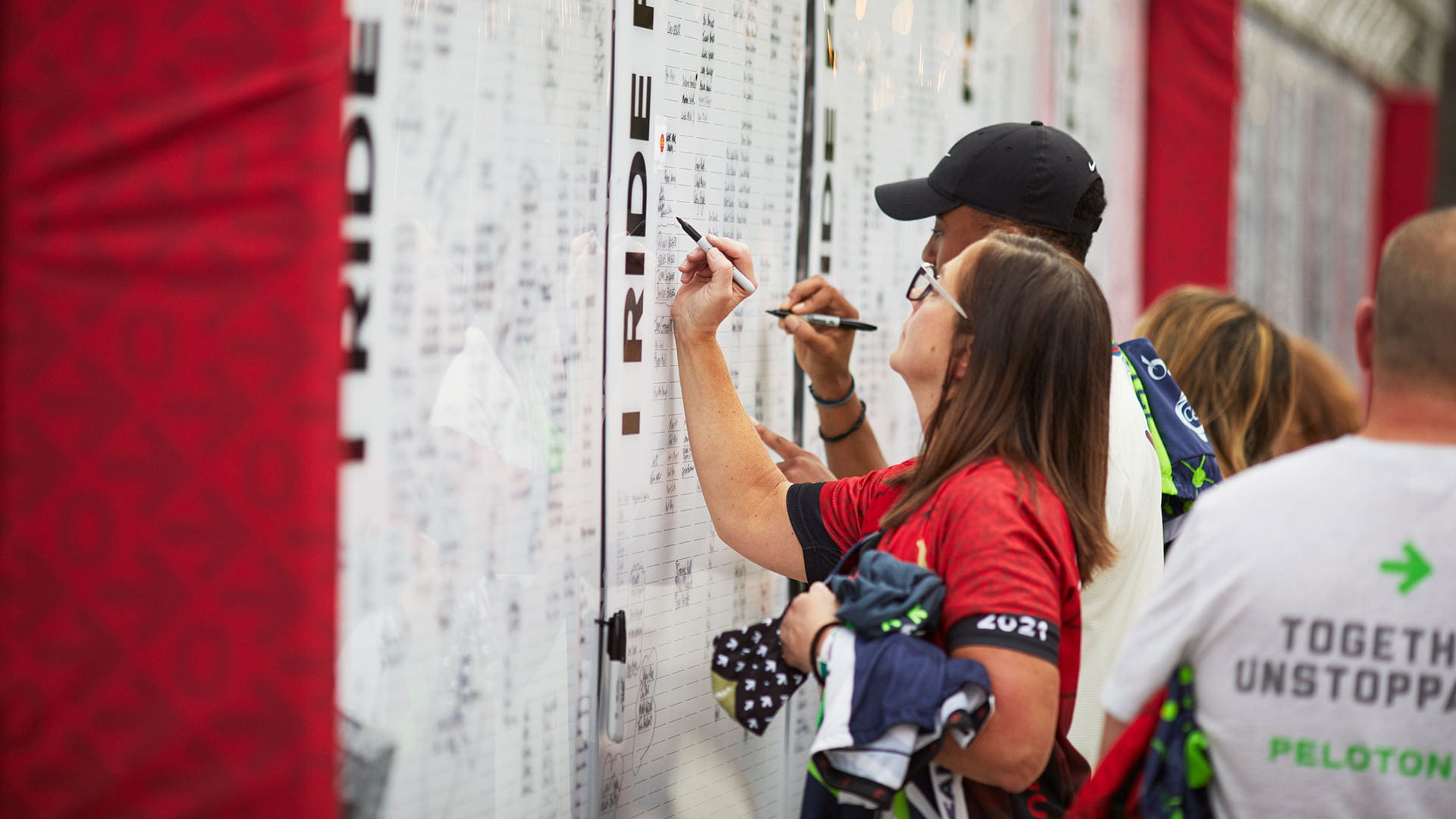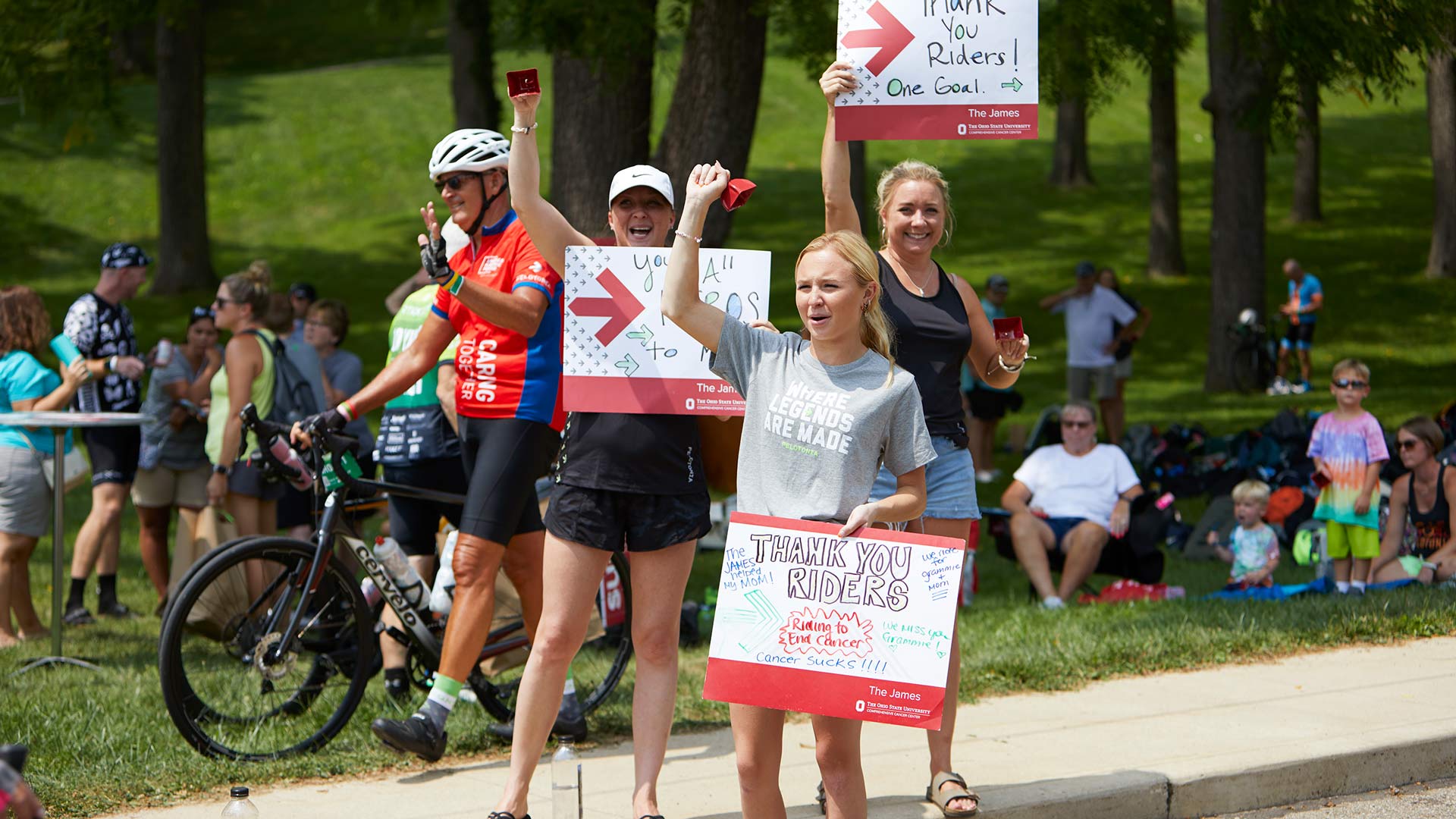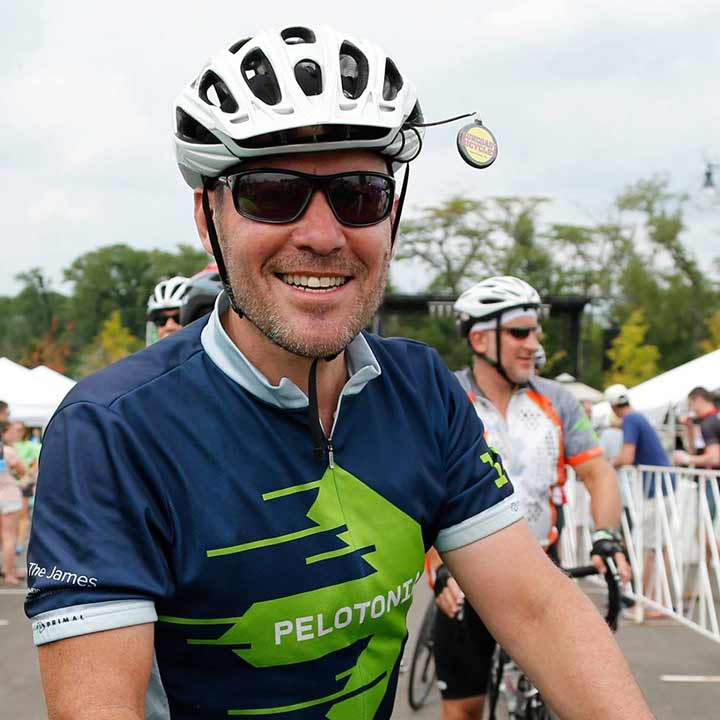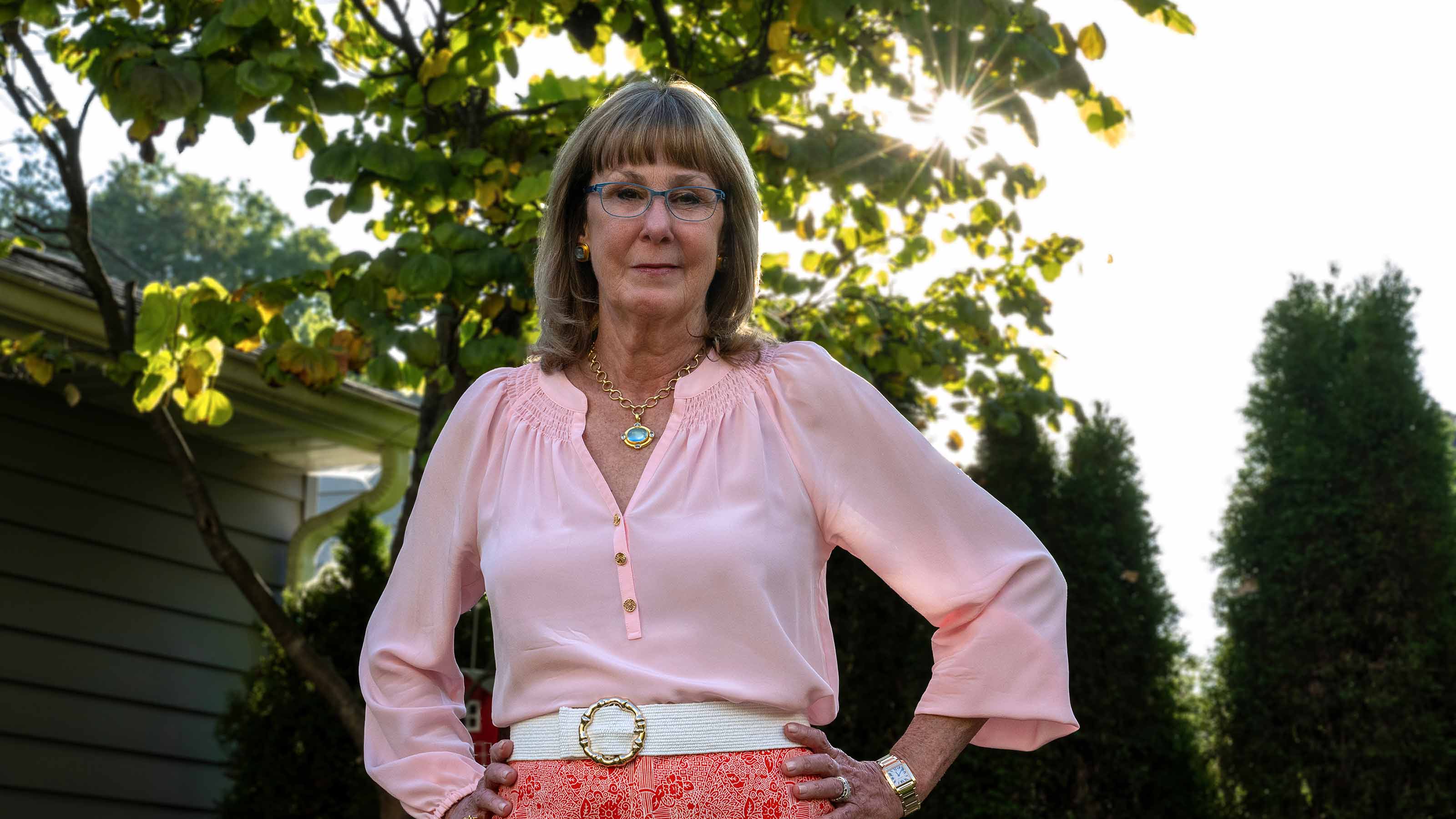The pedaling power of Pelotonia: Millions raised for cancer research at Ohio State
How a grassroots bicycling event in Ohio has become a juggernaut for funding cancer research.
Since the 2010, second annual Pelotonia — a cycling event spanning hundreds of miles throughout central Ohio to raise money for cancer research at Ohio State — Julie Kriss has been involved with the Girls with Gears peloton (riding group).
But this year, she switched gears and became even more deeply involved with the event as the director of Team Buckeye, Ohio State’s official Pelotonia team — a role that she, as a breast cancer survivor, embraces both professionally and personally.
After being diagnosed in 2023 with hormone-positive/HER2-negative breast cancer, Kriss began a treatment regimen at The Ohio State University Comprehensive Cancer Center – Arthur G. James Cancer Hospital and Richard J. Solove Research Institute (OSUCCC – James) that would include surgeries, radiation treatments and chemotherapy before she became cancer-free in October 2024.
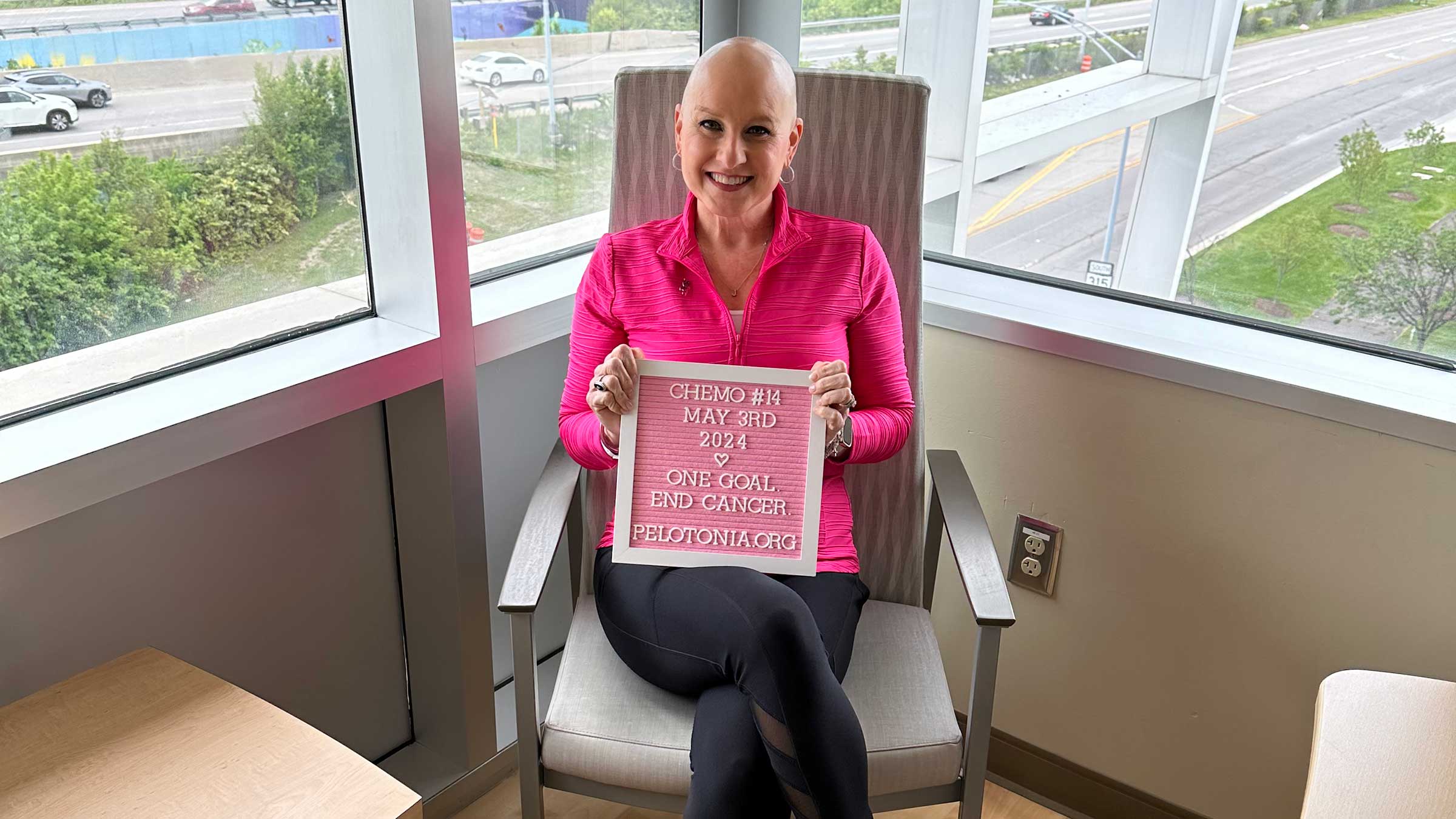
She’s convinced that her cancer experience was much less grueling than those of her grandmother and several friends who had breast cancer, mainly because of research-based treatments at the OSUCCC – James that were made possible in part by Pelotonia dollars.
“I witnessed my grandmother endure significant challenges during her cancer journey and treatment,” says Kriss, a Georgia native who now resides in New Albany with her husband Scott. “When I received my own diagnosis, I assumed I was facing a similar path.
 “But because of the research and treatment advancements that have been made here at The James, my experience and outcome were dramatically better than I expected. I was able to continue working through my entire chemotherapy and radiation treatment without needing any time off. I share my story as often as I can, because it points to the critical importance of funding cancer research and creating the possibility of a cancer-free world.”
“But because of the research and treatment advancements that have been made here at The James, my experience and outcome were dramatically better than I expected. I was able to continue working through my entire chemotherapy and radiation treatment without needing any time off. I share my story as often as I can, because it points to the critical importance of funding cancer research and creating the possibility of a cancer-free world.”
Although her active treatment is finished — and she got to “ring the heck out of the bell” to celebrate her survivorship — she still undergoes hormone therapy and takes a drug to offset the bone-loss side effect of her medication.
Kriss is grateful to all her physicians and caregivers at The James and, through her new role, she wants to be an even bigger advocate for cancer research than she was before.
“My job is to drive deeper engagement across the Team Buckeye community,” Kriss says. “That means building awareness, strengthening participation and increasing support — more riders, more challengers, more volunteers and ultimately more donations to support innovative cancer research. It’s a focused effort to grow our impact, and I’m very excited to lead the charge.”
Community rallies to the cause
Since 2009, many thousands of riders, volunteers and donors have become part of the Pelotonia community to support the OSUCCC – James’ vision of creating a cancer-free world. They have ridden millions of miles, passed out tens of thousands of PB&Js and orange slices at rest stops and raised more than $309 million to support cancer research at Ohio State.
Along the way, this growing community of cancer survivors, physicians, researchers, staff, volunteers and thousands more impacted by cancer have cried, cheered one another up steep hills, shared cancer-journey stories and formed lasting bonds.
This was the goal of the forward-thinking Pelotonia founders, who, against great odds and during a devastating economic recession, created a fundraising event that has become the model for other cancer hospitals, having funded groundbreaking and lifesaving research and screening programs at the OSUCCC – James.
W. Kimryn Rathmell, MD, PhD, former director of the National Cancer Institute (NCI) who became CEO of the OSUCCC – James in May 2025, says she was immediately impressed by strong community support for Ohio State’s cancer program as exemplified by Pelotonia.
“We have something very special here in our support from and engagement with the community. It is most immediately realized by the massive impact of Pelotonia,” Dr. Rathmell says.
An avid cyclist who often rode her bike to work while at the NCI, Dr. Rathmell has become a Pelotonia rider as well, selecting for her inaugural ride the 24-mile route as a member of the CCC – James Comprehensive Cancer Crushers peloton, which is a part of Team Buckeye.
“One of the valuable things about Pelotonia is that it brings the community in so that they know why we care so much about cancer research,” Dr. Rathmell says. “It draws on the energy of people who’ve experienced cancer in one way or another, who’ve lost loved ones to cancer and who now want to be part of a unified mission against cancer.”
She says it also enables the community to share personal stories with cancer researchers and physicians.
“It’s an open door for bi-directional communication — a partnership between community members and people who are scientists and doctors working on the cancer problem. Bringing everyone together on bicycles creates an even playing field where individuals can understand what the importance of addressing cancer is to each of us. That kind of partnership can lead to transformational change.”
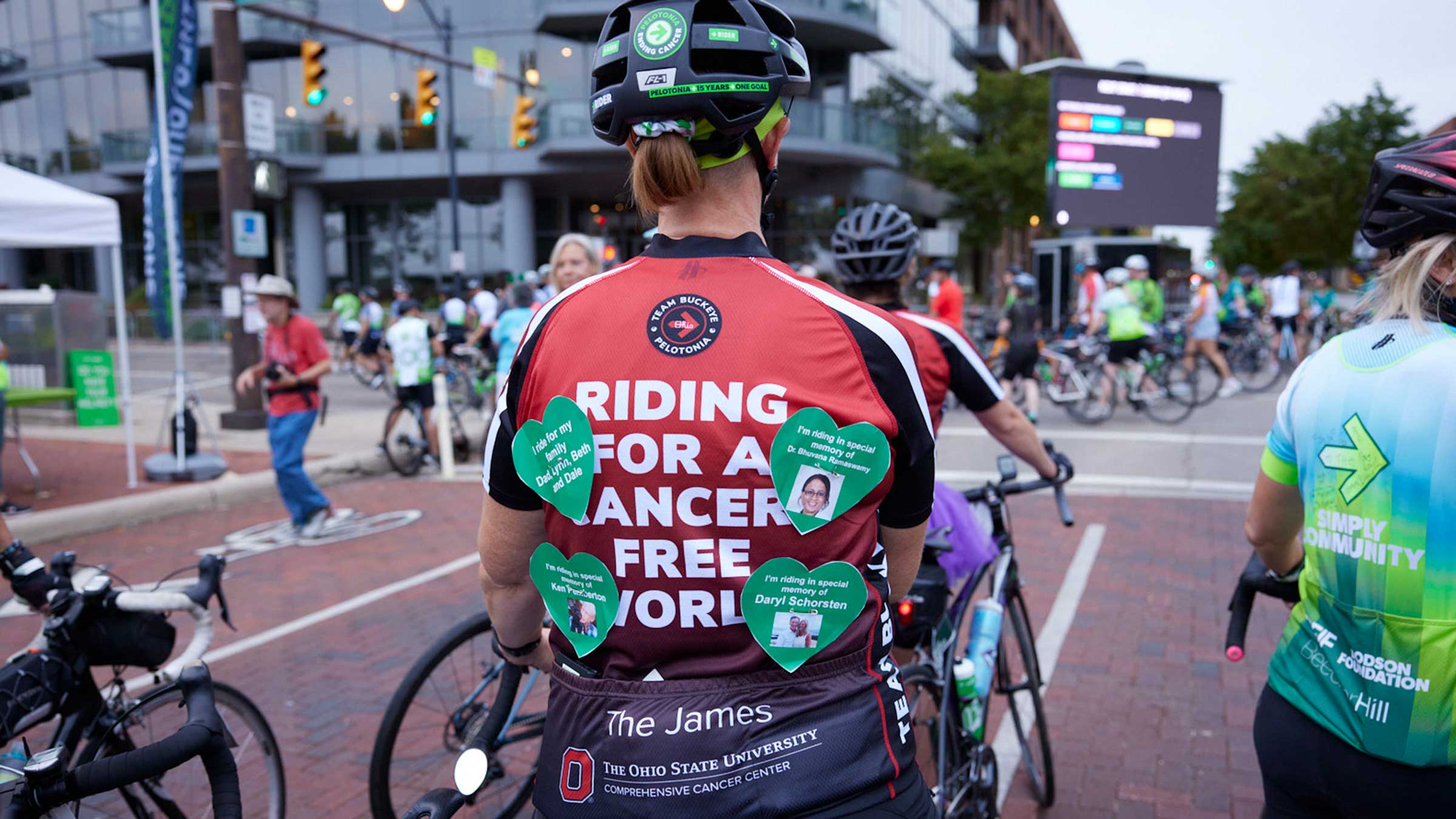
Other OSUCCC – James leaders agree with her about Pelotonia’s far-reaching impact.
“I don’t know of a physician or a scientist here who hasn’t in some way benefited from Pelotonia funding,” says David Cohn, MD, MBA, chief operating officer and chief medical officer at the James Cancer Hospital and Solove Research Institute.
Dr. Cohn, who has ridden in every Pelotonia since the inaugural Ride Weekend in 2009, says Pelotonia has helped fund recruitment of world-class scientists; laboratory-based, translational and clinical research; drug development; four statewide cancer-screening initiatives; the purchase of high-tech equipment; the Pelotonia Institute for Immuno-Oncology (PIIO); and the next generation of cancer scientists.
“Through the ride and other Pelotonia-related events, people in the community get to know people at the Comprehensive Cancer Center on a very personal basis,” says Raphael Pollock, MD, PhD, director of the OSUCCC. “As Pelotonia thrives, so thrives the Comprehensive Cancer Center.” Dr. Pollock, who was diagnosed with chronic lymphocytic leukemia in 2017, has a special connection to Pelotonia-funded research.
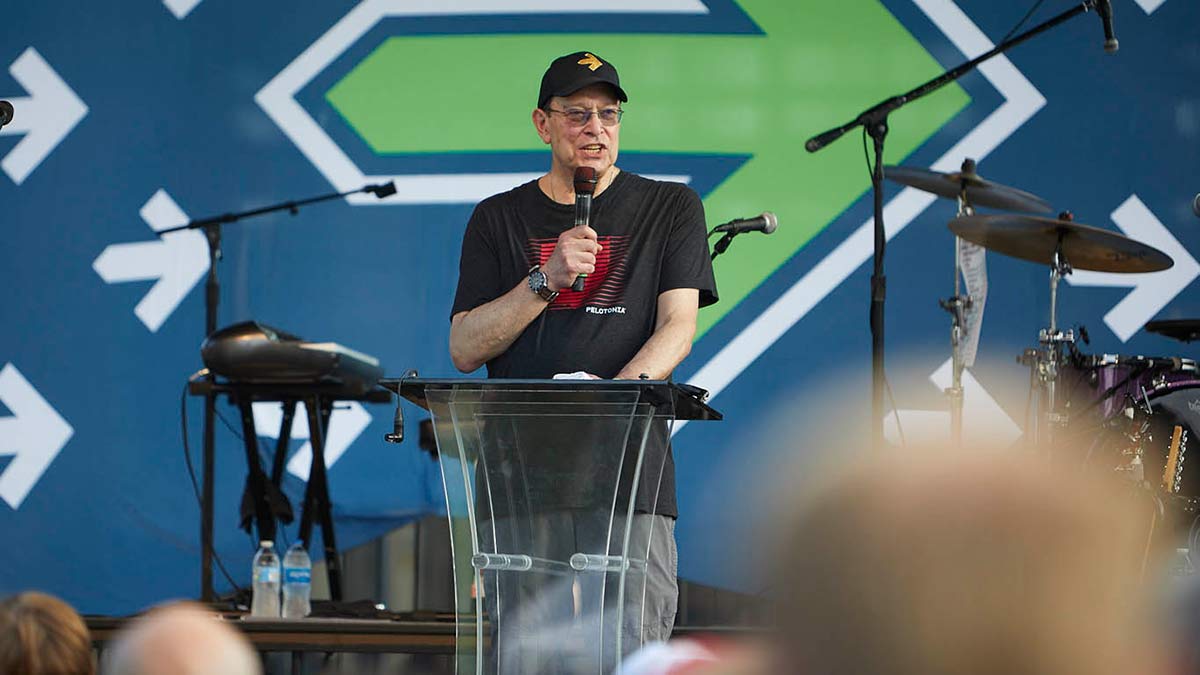
“The drug that is keeping me alive was developed here, in part with Pelotonia funding, so I have a very personal level of gratitude to the riders,” Dr. Pollock says.
Read why Dr. Pollock “owes his life to CLL treatment at Ohio State”
Starting as a bike ride, becoming a movement
The Pelotonia story began soon after Michael Caligiuri, MD, was named CEO of The James (in addition to his then-existing position as director of the Comprehensive Cancer Center) in 2008.
“We needed money to continue to do the great things I saw already happening but were happening too slowly,” Dr. Caligiuri says. “I wanted to do something grassroots that would connect us with and bring in the whole central Ohio community and raise the awareness of the importance and need for cancer research.”
A former colleague told Dr. Caligiuri about the Pan-Mass Challenge, a fundraising cycling event that, at the time, had raised about $270 million for cancer research for the Dana-Farber Cancer Institute in Boston.
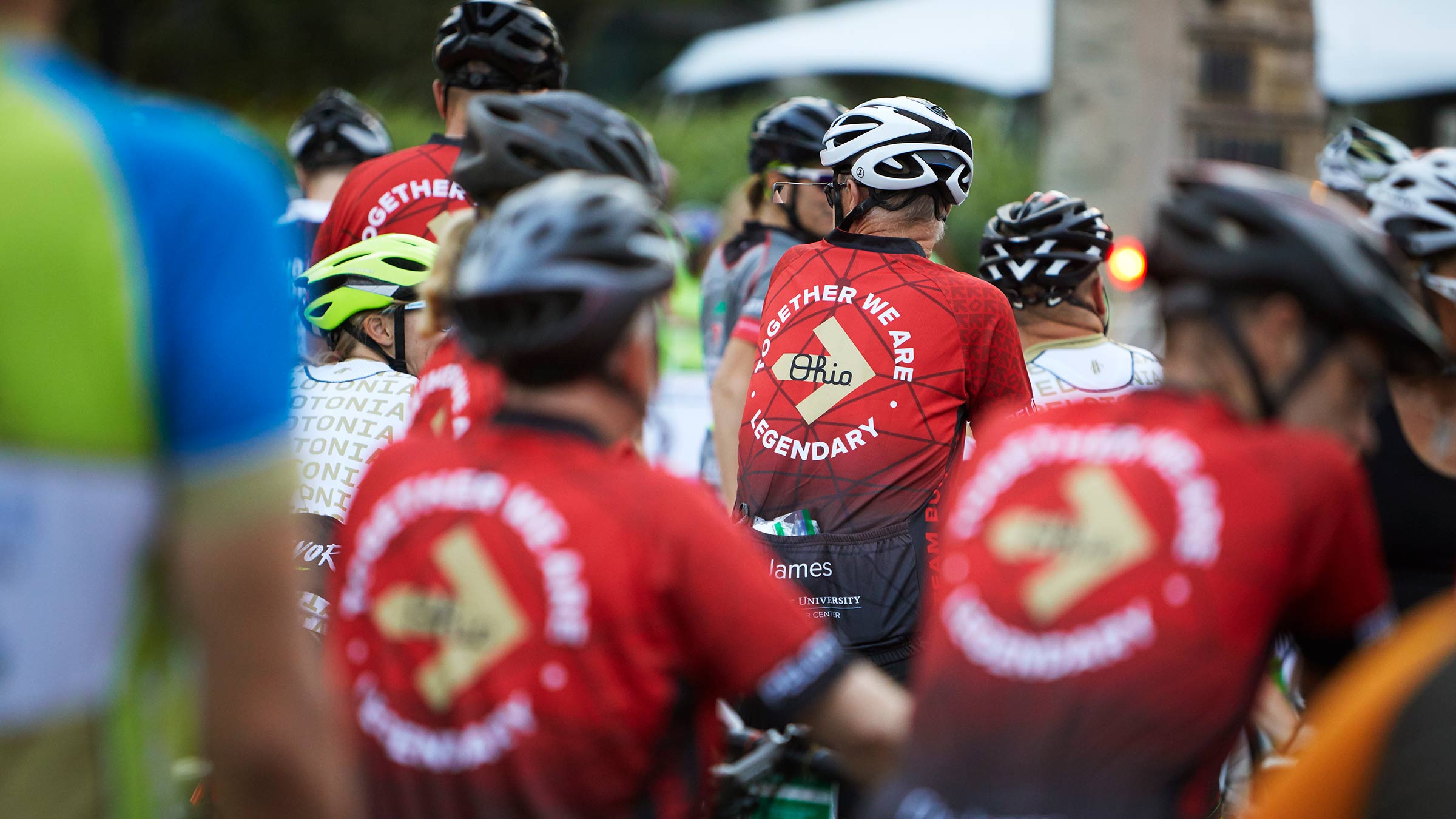
Hearing that total, he says, “stopped me in my tracks. I said, ‘If someone else can do it, why can’t we do it here?’”
Creating a similar event in Columbus began with funding to hold the event. It would cost at least $2 million to hire the initial Pelotonia staff, recruit riders and volunteers and host the huge cycling event, which would include an opening ceremony and two days of cycling, with rider routes initially ranging from 25 to 180 miles.
NetJets, a private aviation corporation headquartered in Columbus, funded the first Pelotonia ride, which involved 2,265 riders and 1,500 volunteers and raised $4.5 million.
“Our absolute mission was to create something so extraordinary that people would feel left out if they weren’t part of it.”Tom Lennox, Pelotonia’s first CEO and a cancer survivor who was treated at the OSUCCC – James
The second Pelotonia ride raised $7.8 million, a number that continued to grow with subsequent Pelotonia rides over the years as riders and volunteers solicited donations from family, friends and co-workers and hosted an endless string of fundraising events. Pelotons were formed by companies, organizations, families and neighbors.
Riders came from all over Ohio and beyond. They rode route options of 25 to 100 miles on Day One of Pelotonia weekend, with many riders staying overnight in dorm rooms to tackle another 80 or 100 miles on Day Two. The routes headed south to Ohio University until 2012, when the ride was rerouted to Kenyon College.
Both routes offered literal and metaphorical hills to climb.
“So many people talked about the challenge of it and how they were riding for someone going through so much more with their cancer treatment,” Lennox says of these challenging climbs.
How the money raised supports clinical cancer research
Thanks to Pelotonia’s major funding partners, every dollar raised by riders, volunteers and donors directly funds cancer research at the OSUCCC – James. A plan was developed to best utilize Pelotonia funds in several major areas, including a Pelotonia Scholars Program, Idea Grants, statewide screening programs, the purchase of essential research equipment and recruiting and retaining world-class talent.
Examples of Pelotonia funding uses
- The Pelotonia Institute for Immuno-Oncology
Established in 2019 through an initial Pelotonia pledge of $102,265,000, the PIIO helps researchers find ways to boost the body’s immune system to better recognize, attack and destroy cancer cells. - Statewide Outreach Initiatives
Millions of Pelotonia dollars have supported screening and early detection programs for colorectal, endometrial (uterine), breast and lung cancers throughout Ohio. - Idea Grants
Since 2010, The James has awarded 244 Idea Grants supported by Pelotonia and other funding that total $34.4 million to research teams representing more than 200 researchers from 10 of the 15 colleges at Ohio State, along with Nationwide Children’s Hospital and Cincinnati Children’s Hospital Medical Center. - Pelotonia Scholars Program
To help educate the next generation of cancer researchers, this program since 2010 has awarded 734 scholarships to Ohio State students in any discipline or level of education who want to conduct cancer research with faculty mentors. These awards have been given to 329 undergraduates, 228 graduates, 15 medical students and 162 postdoctoral fellows.
“We would not be where we are today without Pelotonia,” Dr. Cohn says of the OSUCCC – James’ emergence as one of the nation’s top-ranked comprehensive cancer centers. “Pelotonia is the kick-start that allows people to come here to gain access to the resources they need to do preliminary research that can lead to the next level of funding from the National Institutes of Health or the National Cancer Institute.”
It’s key for recruitment, too, says Dr. Pollock, who’s served as director of The Ohio State University Comprehensive Cancer Center since 2017.
“Pelotonia funds are critical for recruitment and retention of faculty,” he says, adding that Pelotonia is well-known in the cancer world as a fundraising juggernaut and has become a selling point for the OSUCCC – James for recruitment. “For example, when we’re recruiting a great researcher, we point out the Pelotonia Scholars Program they can utilize.”
It’s working
“I would not be here without Pelotonia,” says cancer biologist Gina Sizemore, PhD. “Without that time and independence in my Pelotonia Scholarship research, I wouldn’t have been able to secure additional funding to start my own research program.”
As a Pelotonia Scholar, Dr. Sizemore worked in the lab of former professor Mike Ostrowski, PhD, whose work focused on molecular biology and cancer genetics. After her scholarship ended, she joined the Department of Radiation Oncology, where she is now an associate professor. She also is a co-leader of the Cancer Biology Program at the OSUCCC – James. Dr. Sizemore has received two Pelotonia Idea Grants and has mentored two Pelotonia Scholars in her lab.
Making a wonder drug possible
One of the first Pelotonia Idea Grants was awarded to former Ohio State professor John Byrd, MD, who sought funding for a clinical trial to test the effectiveness of ibrutinib, a drug that showed promise in treating chronic lymphocytic leukemia (CLL).
“I went to Mike Caligiuri and the committee and said we had the possibility of making this drug accessible to 150 patients with CLL, most of whom would die soon without it,” Dr. Byrd says. “Mike and the Pelotonia people said, ‘Yes, this is exactly what Pelotonia funds are for.’”
Some 80-90% of the people in that clinical trial went into a durable remission. The U.S. Food and Drug Administration approved Ibrutinib in 2014, which quickly became the standard of care. The second generation of the drug, acalabrutinib (also largely developed by Dr. Byrd and his lab), was approved by the FDA in 2017.
Acalabrutinib is now the drug Dr. Pollock takes every day.
“I will take this for the rest of my life,” he says. “It’s not only saving my life, but it enables me to continue my work here [at the cancer center]. My family and I are very grateful to Pelotonia for making this possible.”
Pelotonia pays back to the health of Ohioans
Partially funded by Pelotonia dollars, the Turning the Page on Breast Cancer (TPBC) statewide initiative is demonstrating the effectiveness of multiple methods of community-, clinic- and web-based engagement for addressing disparities in breast cancer outcomes among Black women.
Black women have a 42% higher death rate for breast cancer than white women, and they also have an increased risk for more aggressive types of the disease. However, an OSUCCC – James study showed that they are at a disadvantage when it comes to preventing and treating breast cancer, due largely to disparities in access to preventive screenings and education about risk management.
They also are less likely to use genetic testing and other preventive measures because they have less access to financial resources such as insurance or income for testing costs, limited proximity to mammograms and other screening technology and struggles finding time away from work and family responsibilities to seek preventive health care.
“If people experience social and economic problems, those are going to take precedence over concerns about genetic testing and other measures for preventing cancer that may or may not develop,” says Bridget Oppong, MD, MPH, a surgical oncologist and breast cancer specialist at the OSUCCC – James.
To close the gap on disparities in breast cancer testing, researchers at the OSUCCC – James are using the TPBC program to provide educational resources on breast cancer screening for high-risk groups.
Led by Electra Paskett, PhD, deputy director for Population Sciences and Community Outreach at the OSUCCC – James, the TPBC program provides targeted interventions in 11 Ohio counties where Black women have comparatively high breast cancer rates.
This initiative helps local health care facilities conduct effective breast cancer screening, follow-up and treatment; enlists the involvement of community-based organization and social media to enhance awareness of these services; and provides education and personal-risk information through a culturally relevant website.
It’s one of the many ways Pelotonia gives back to the people of Ohio, and to the future of cancer research, one rider, one volunteer, one challenger at a time.

Give to Pelotonia. Save lives.
Donate today to continue funding the brightest minds in cancer research who are making cancer therapies less toxic and more effective for patients.
Donate now
100% of every dollar raised by Pelotonia funds lifesaving cancer research at the OSUCCC – James
See where the money goes.
Pelotonia-funded research


